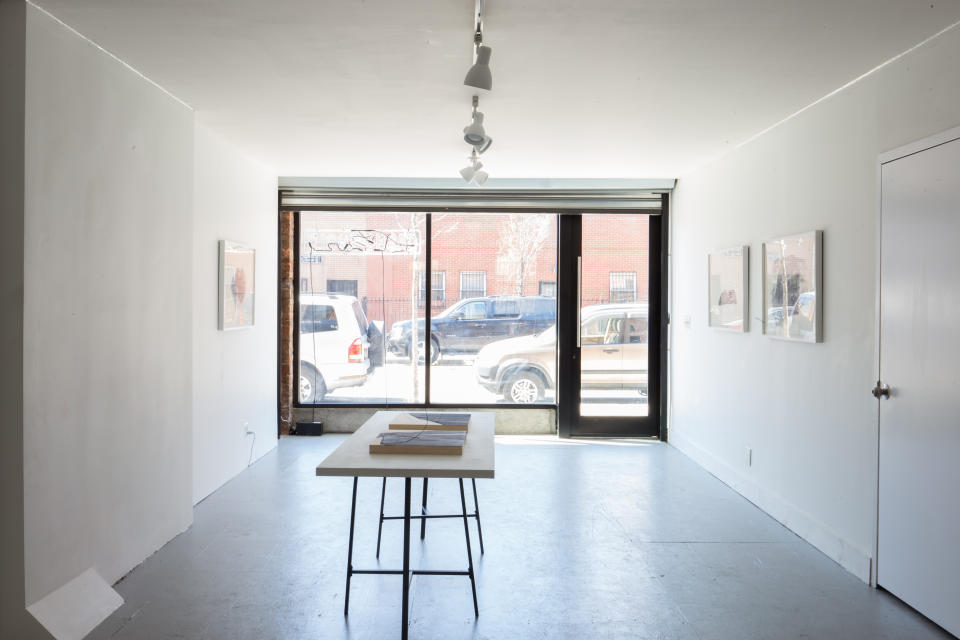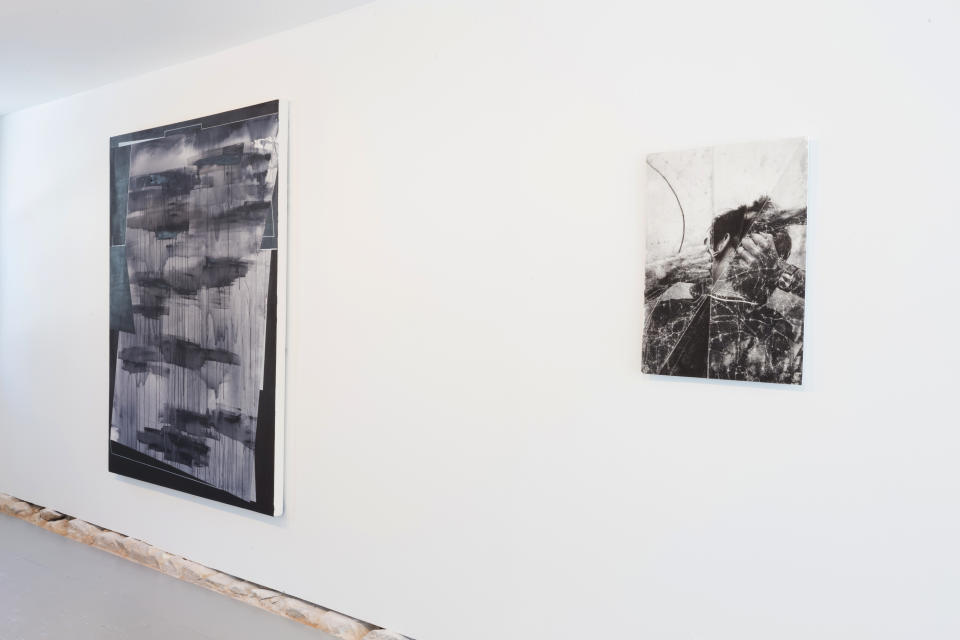Can a New Gallery in Bed-Stuy Make Space for Conversations About Gentrification?

As I walked from the Franklin Avenue subway station to meet gallerist Joeonna Bellorado-Samuels, I counted three pawn shops, two organic juice bars, a couple of cute artisanal cafes illuminated by laptop backlights, and three liquor stores―a testament to the gentrification taking place in Bed-Stuy, Brooklyn. Bellorado-Samuels is standing outside her pop-up gallery, We Buy Gold―also the name of the project the gallery is housing―looking like art herself.

Wearing all black, a bold red lip, and her signature thick Grey Ant frames, she has the aura of a self-composed woman. She gives the head nod salute to those who pass her on the sidewalk-some stop and ask her questions about what this is and who she is.
A former Washington, D.C., lobbyist turned director of New York's Jack Shainman Gallery, Joeonna Bellorado-Samuels has merged her passions for high art and social justice to create We Buy Gold. Turned off after D.C. became obsessed with homeland security post-9/11, Bellorado-Samuels moved to New York City and started a new career at The Studio Museum of Harlem. She's lived in Brooklyn for the past 10 years, just one block from the pop-up gallery, and hopes to "add to the conversation around gentrification in a way that is inclusive and respectful, and inviting." Her Afro alone shatters the notion that people of color are simply cultural laborers and art is only for the elite. "We have to be involved with all levels of art," she adds.

By cleverly ornamenting the front window with fluorescent lights that read "Cash for Gold," Bellorado-Samuels is placing a recognizable façade on a space that is not usually inclusive to people of color, and therefore the native residents in Brooklyn. "We are slowly chipping away at the notion of exclusivity in the art world," Bellorado-Samuels says.
"We are slowly chipping away at the notion of exclusivity in the art world."
There has been much controversy around the violent gentrification and erasure of local businesses and people in Bed-Stuy. Efforts like We Buy Gold can bring nuance to the ways that investors and gentrifiers engage with the communities they are infiltrating. By being open to the history of a place and its inhabitants, the process of gentrification can be shifted-or, at the very least, made more tolerable.

We Buy Gold is a series of three exhibitions that will run over the next six months. ONE, the current exhibition, features the work of geometric abstract painter Torkwase Dyson, writer and artist Renee Gladman, and photographer and sculptor Harold Mendez, whose work is currently on display at the Whitney's Biennial. Bellorado-Samuels has struck a chord that balances the politics of valuing artists of color while not making the work all about the artist's race. Placing the artist's work at the forefront of the conversation and surrounding it with pieces by other artists of color provides context and invites a productive dialogue that leaves out the assumption that the work is autobiographical. When a white artist exhibits their work, many engage with the art itself, not the story or experience behind the artist-this is a luxury that artists of color are usually not afforded.
The opening was filled with many people of color in the art world, from curators to gallerists to critics, forcing the crowd to spill out of the space and onto the sidewalk of Nostrand Avenue, attracting many passersby to join. Many of the attendees lived in Brooklyn but worked within institutional spaces in Manhattan, so gathering together in the name of self-representation was galvanizing. "It was important for the neighborhood to know that this was being created from the inside," Bellorado-Samuels says. "Something that was bubbling from below."
There is also a shop area featuring zines, Solange Knowles' A Seat at the Table book, a pin-up of Jason Lazaurus' painting of the White House phone number, and even a small savings bank shaped like a block of gold, a little irony that makes light of the economic restrictions that make it nearly impossible for most people to purchase art.

We Buy Gold plans to put on public programming events that speak to both old and new Bed-Stuy. One of the most obvious issues with gentrification is that new residents move into the neighborhood and ignore those who were there before them. One local resident tells me that it would be nice if gentrifiers could at least say hello as they pass her on the sidewalk. Acknowledgment may demystify the idea that there was no life happening in Brooklyn before the yoga studios and overpriced lattes arrived. Bellorado-Samuels recognizes this gulf between the conflicting worlds, and with this in mind, We Buy Gold aims to function as a bridge.
You Might Also Like

